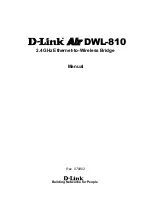
Filt
Filters and QOS Configuration for Ethernet Routing Switch 5500
Technical Configuration Guide
14
January 2013
avaya.com
3.4 Policies
Packets received on an interfac e are matched against all policies associated with that interface.
Henc e, all policies are applied to the packet.
Policy precedence
– the precedence attribute is used to specify the evaluation order of policies
that apply to the same interfaces. Policies with higher precedence (i.e., a larger value) are applied
before those with lower precedence (i.e., a smaller value). Precedence values must be unique for
all policies being applied to the same interface role.
If one policy associated with the specific interface only specifies a value updating the DS CP value
while another policy associated with that same int erface only specifies a value for updating the
802.1p user priority value, both of these actions occur.
If two policies on the specified interface request that the DS CP be updated but specify different
values - the value from the policy with the higher prec edence will be used.
Referenc ed component conflicts - action or meter criteria can be specified through individual
classifier blocks. When a policy references a clas sifier block and members of the referenced
block identify their own action or meter criteria, action and meter data must not be specified by
the policy.
The actions applied to packets include thos e actions defined from us er-defined policies and those
actions defined from system default policies. The user -defined actions always carry a higher
precedence than the system default actions. This means that, if user -defined policies do not
specify actions that overlap with the actions associated with system default policies (for example,
the DSCP and 802.1p update actions installed on untrusted interfaces), the lowest precedence,
default policy actions will be included in the set of actions to be applied to the identified traffic.
The following table displays the ERS 5500 default policy action with corresponding drop actions .
The drop action specifies whet her a packet should be dropped, not dropped, or deferred. A drop
action of deferred-P ass specifies that a traffic flow decision will be deferred to other install ed
policies.















































